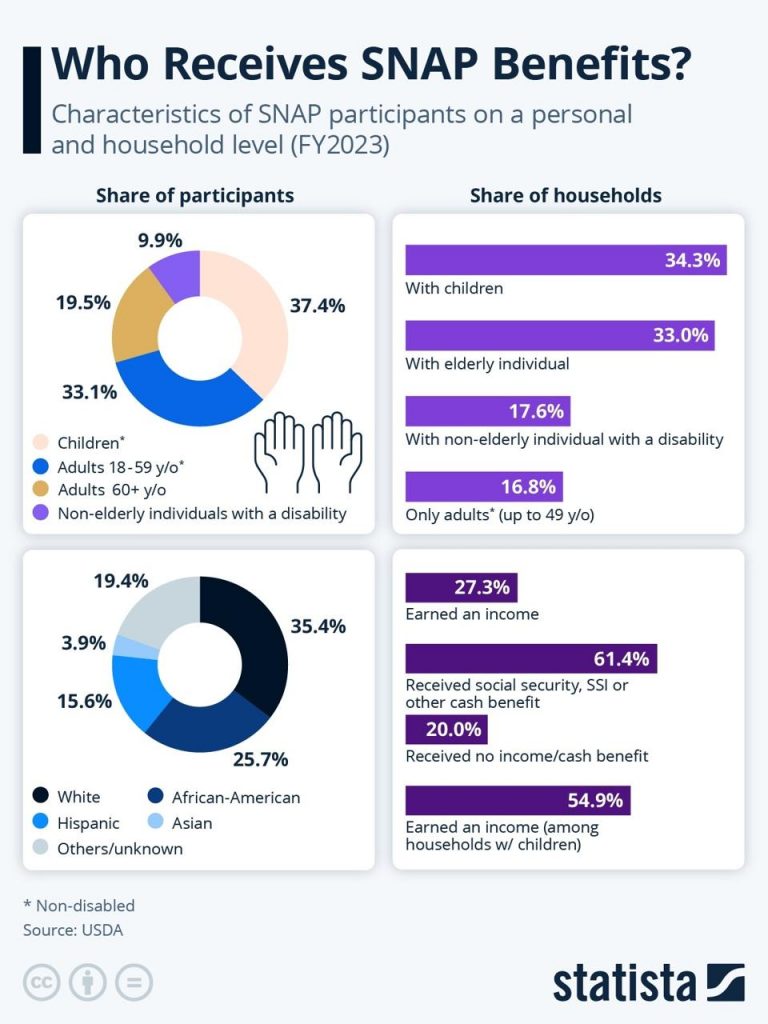As the U.S. government shutdown drags on, the first batches of recipients of the Supplemental Nutrition Assistance Program have not collected funds to purchase groceries. New rounds of monthly payments normally start on the 2nd, but even by November 6, no benefits had been paid, leaving those who depend on them scrambling, including many working families, single mothers and disabled as well as elderly Americans from all over the country.
The Trump Administration said at the beginning of November that it would only pay out 50% of SNAP payments this month since due to the shutdown it had no further funds available inside the Department of Agriculture, which administers the program. It furthermore refused to use emergency funds provided during the shutdown by Congress. Wednesday night, a guidance to states was actually revised, saying to pay out only 35% of original SNAP benefit levels. Thursday, a federal judge eventually ordered the government to pay all benefits by Friday, a decision the USDA has appealed.
More than 40 million Americans—or one in eight—received SNAP benefits last year. While during the pandemic, spending on the program rose as high as $128 billion annually, this was down to around $100 billion again in 2024. The Trump administration and Republicans in Congress have this year already made cuts to the tune of $186 billion to SNAP over the course of 10 years as stipulated in the One Big Beautiful Bill Act signed into law in July.
Almost 4 in 10 SNAP recipients in 2023 were children, data from the USDA shows, as families and especially single-adult families struggle with finances more often. Additionally, around 2 in 10 recipients were older Americans over the age of 60 and 1 in 10 was a child or non-elderly adult with a disability. One third of SNAP recipients were non-disabled adults between the ages of 18 and 59. However, on a household level, only 16.9% of households receiving SNAP contained only adults under the age of 50.
How Many SNAP Recipients Work?
Last year, 27.3% of households receiving SNAP had an earned income and able-bodied adults up to 54 years of age without dependents already fall under a work requirement if they want to receive more than three months of payments in three years. The share of households that had an income from work rose to 54.9% among households with children, once more highlighting the plight of many working parents to make ends meet. Among married-couple families, this rate rises to more than 80%.
All recipients 16-50 years old also fall under a less strict work requirement unless they have health problems or qualify for another limited exception. However, observers point out that many issues SNAP recipients have, like lack of housing or mental health conditions, are already not covered under these, and that bureaucracy around SNAP also poses additional hurdles.
More than 60% of SNAP-receiving household also received a form of cash benefit like Social Security payments or Supplemental Security Income. 20% received no earned income or cash benefits. American-Americans are overrepresented among recipients at 25.7% (compared to around 14% of the population), while Latinos are underrepresented (15.6% of SNAP recipients compared to 19.5% of the population).
Charted by Statista

